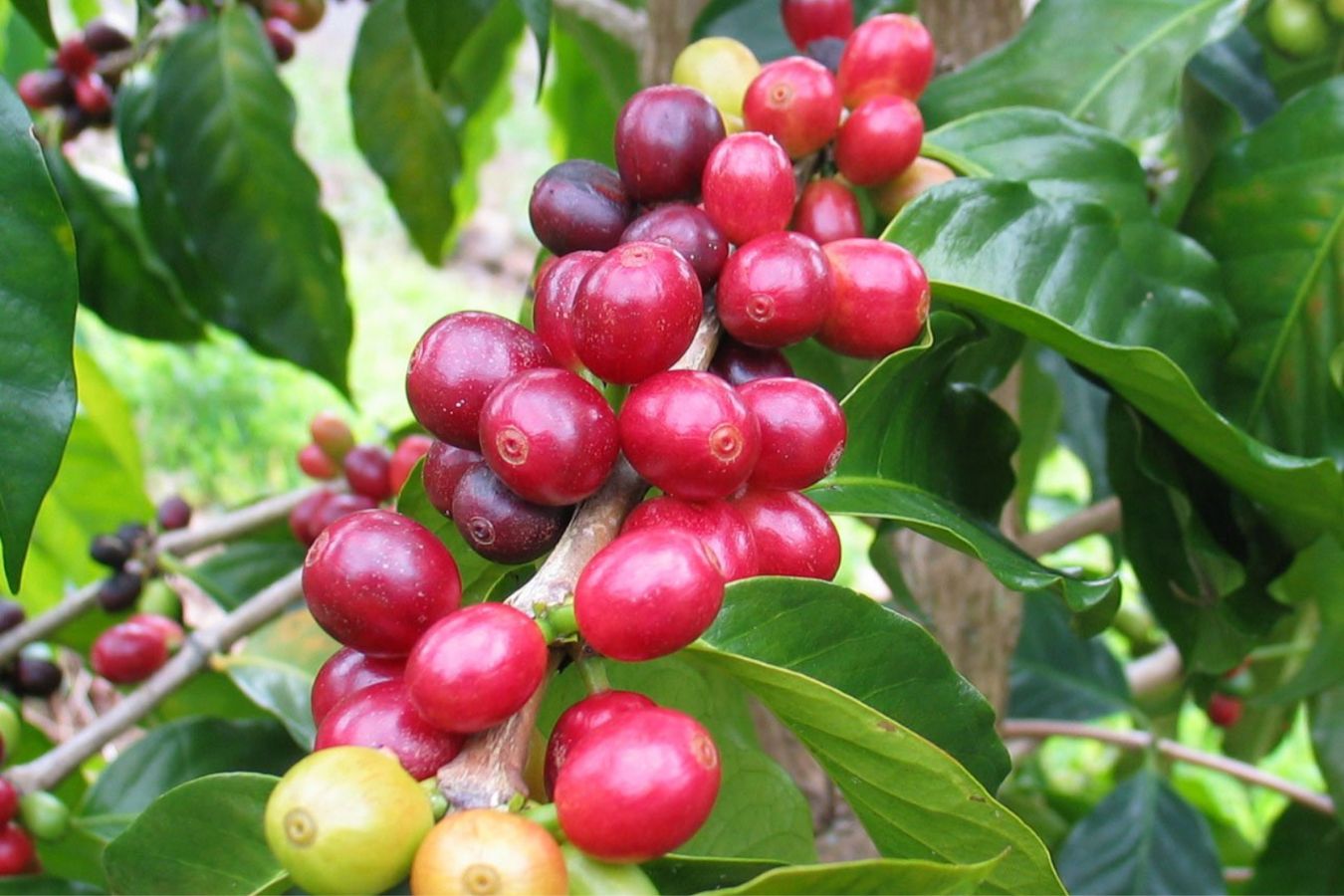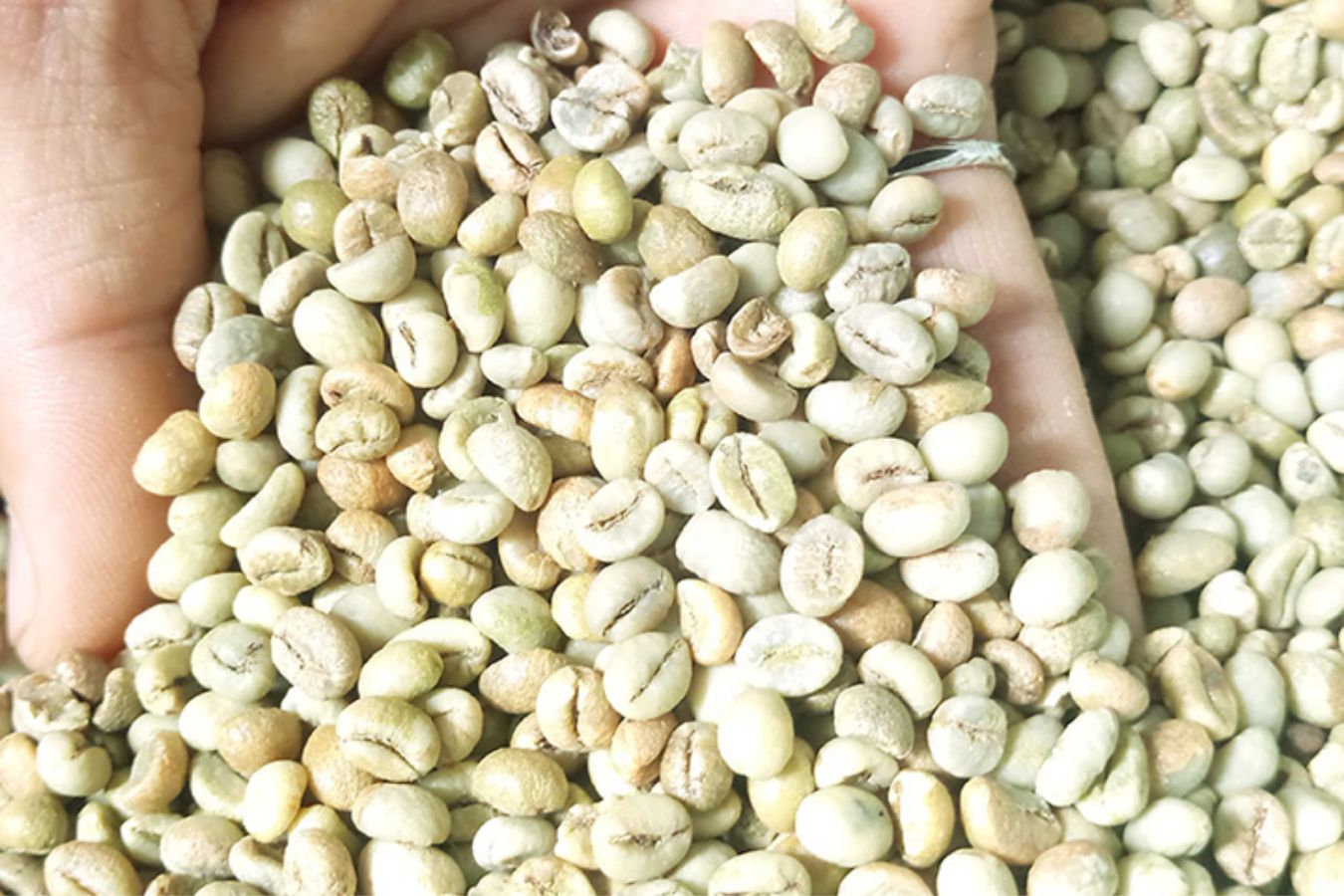
To produce a specialty coffee, attention to detail must continue throughout the entire process – and three fundamental points of quality control can make all the difference to a great cup of coffee—perfect last.
Paying Coffee: Choose only the suitable coffee berries
Do you think selecting ripe coffee is a simple job? It’s not that simple at all! This is considered the most time-consuming and challenging stage for devoted farmers.
According to traditional farming practices, the harvest season for Robusta coffee varieties starts from October to January.
One month later, farmers will decide the harvest time for Arabica varieties. Picking suitable for their cultivation area and commercial coffee, they will usually pick one time (like all the fruits on the coffee tree regardless of green – ripe, at this time, the ratio of ripe fruit is estimated at 50 – 85% ).
Why should they do that? Simply because quantity is more important than quality commercial coffee is often sold as an essential commodity rather than a luxury product. With such a business model, the more output, the more money you get. Even if you do better, the buying agent/factory will not be willing to pay a higher price for your coffee shipment.

However, since coffee from the third wave (specialty coffee ) appeared, things have been slowly changing. The pioneer farmers in this segment do not accept selling their coffee at a low price and seek to process other product lines with higher quality to get commensurate value.
They are instructed to collect only ripe red coffee berries at specialty coffee farms.
This is extremely important, as underripe coffee is still green (even young), or overripe can cause the final cup of coffee to taste sour or bitter. This is not a small challenge for a farm because, as mentioned above, farmers (coffee pickers) are paid based on the amount of coffee they collect.
Pickers are still paid based on weight to solve this problem on specialty coffee farms, but they will be paid a higher price to compensate for the reduced weight picked and a portion of the harvest.
For their meticulous labor. The above efforts are not enough; selecting 100% ripe coffee beans is impossible because of the differences in varieties, care regimes, climatic and soil conditions…
Coffee cannot ripen at the same time. Not to mention, for Robusta coffee, there will be more challenges. Therefore, the next step after the coffee is harvested will be to wash, pick up to remove the poor quality seeds, then need more labor to select green fruits – fully ripened by hand again. This ensures that only the ripest and most delicious coffee cherries are put into practice.
Rice Coffee Beans: Process of selecting benefits
After the ripe coffee beans are selected, depending on which coffee processing method is applied, they will be left whole, peeled, peeled, or completely removed before being dried and dried to a certain quality. Optimum moisture is 10 – 12%; it’s time to prepare for the next step: peeling the silk. And this is where the second quality control check comes in.

You see, the flat, black, brown, deep, broken seeds that “accidentally” pass through the above censorship stages will be obliterated at this step manually, although now there are solutions. The modern color sorter is expensive and has very little time to use (only applied in the harvest season), so few farmers can afford to invest.
More importantly, we have created a certain amount of jobs for local workers – a most practical activity to offset their livelihoods by handpicking. These defective beans are excluded from specialty coffee shops, but unfortunately, they are part of commercial coffee, which you often see in everyday coffee drinks.
Coffee benefits: Final selection stages
After being de-hulled and selected for defects, the high-quality green coffee beans are ready for the final stage: Coffee roasting. However, that is not all; at this stage, the layers of silk (coffee grounds) are still left, and it is necessary to pick up the hand again.

Finish Roasted Coffee – Quality Control continues.
High-quality green coffee is delivered to the roaster, undergoes sample roasting steps, and selects each type’s most suitable roasting profile. The process of “tasting” uncovers errors in the processing or discovers the beautiful flavors this coffee bean has, a process that will continue to repeat through the seasons.
Until the last great cup of coffee is served and enjoyed ( Specialty Coffee And Commercial Coffee). Of course, the three processing quality control checks we’ve talked about will ensure that the amount of coffee rejected is minimal. By enforcing these three quality control points consistently and effectively during the processing stage, the quality of the coffee beans will be significantly improved.

So the next time you sit down to enjoy a delicious cup of specialty coffee, know that it’s not just the beans that make up the excellent coffee flavor – it’s also a meticulous process and hard work—the difficulties of those who check the quality and origin on the farm.
We can achieve miracles. Specialty coffee is not just a product but also a product of cooperation. From farm to cup, working together globally to create a transparent coffee industry that results in great coffee from great places brewed by great people. Great people who support other great people
Green coffee buyer (specialty coffee)
To put it as plainly as possible, a green coffee buyer’s job entails sourcing and purchasing green coffee, frequently searching for specific qualities or sensory traits to meet demand. This could entail obtaining a specified quantity of coffee from a given origin or at a specific cup score, for example.
To do so, green purchasers will typically sample and cup the coffee before evaluating if it fulfills their or their client’s needs. In the end, many green coffee buyers’ first step is to figure out what kind of coffee they need. For green buyers at a large roastery, this may entail looking at which flavor profiles have sold successfully and attempting to match them.
Meanwhile, at an importer, the goal is frequently to match the right producer with the right roaster. For many specialty coffee traders, transparency and traceability are becoming increasingly crucial.
Therefore, there’s a rising need to provide as much clarity and information as possible to both the roaster and the producer. This could be related to the way the coffee is grown, the farmer’s situation, or the specifics of how and when payment will be made.


